Animation layout is an integral part of the storytelling process. Layout Artists use storyboards to outline and plan a film's characters, sets, props, and cameras before staging, blocking, and filming each shot.
Check out these 6 essential components of animation layout:
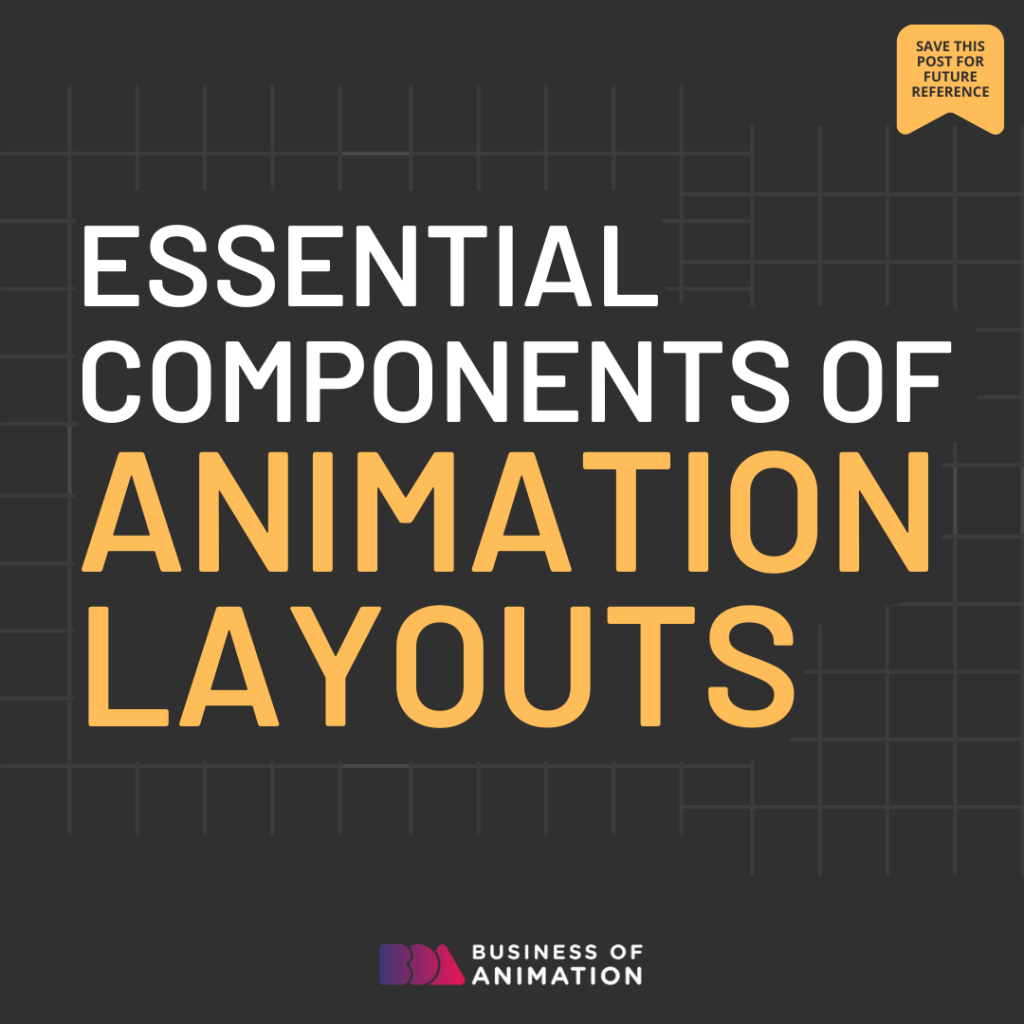
What is an animation layout?
Layout is a fundamental step to effectively deliver and animate stories visually. It is the process that involves many film disciplines and key references such as storyboards and animatics to find the best ways to position sets, characters, models, assets, and cameras in each shot and get everything ready for animation.
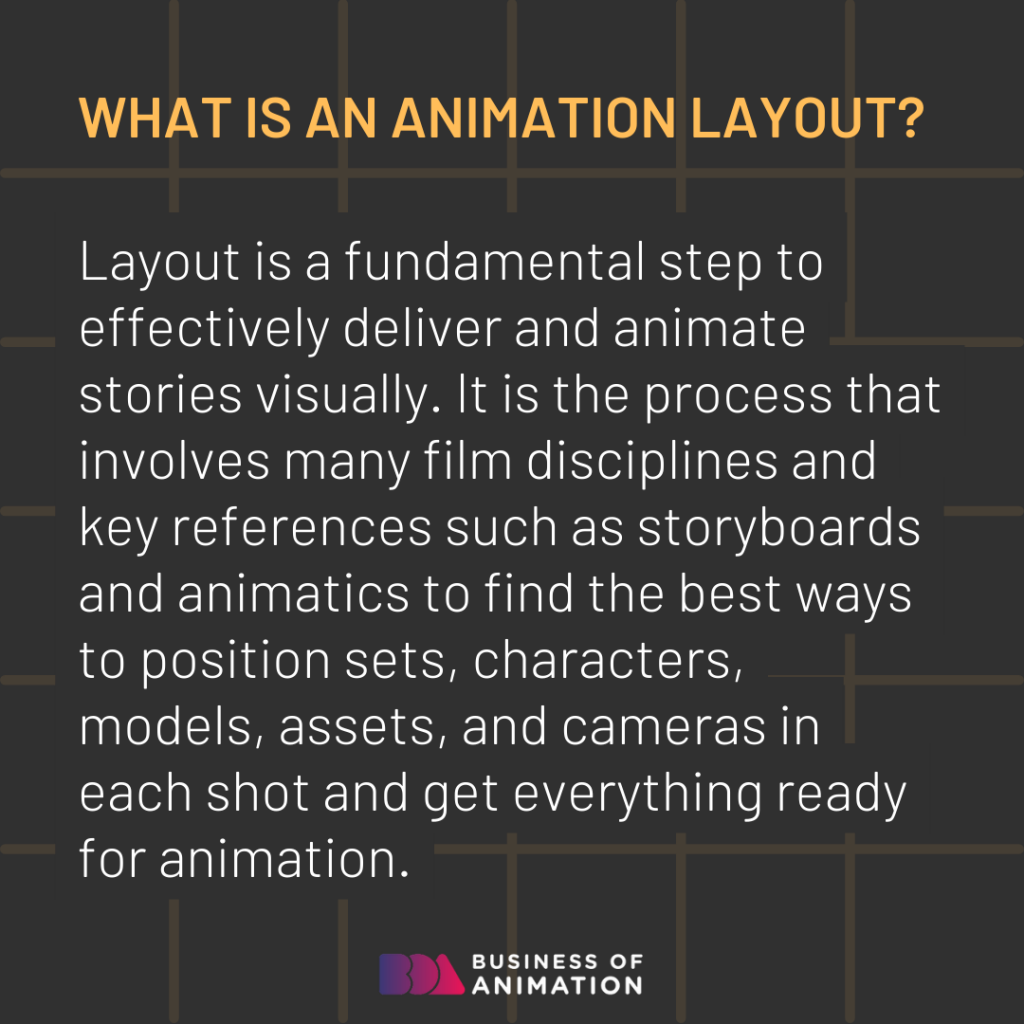
Let's take a closer look at what makes a good animation layout...
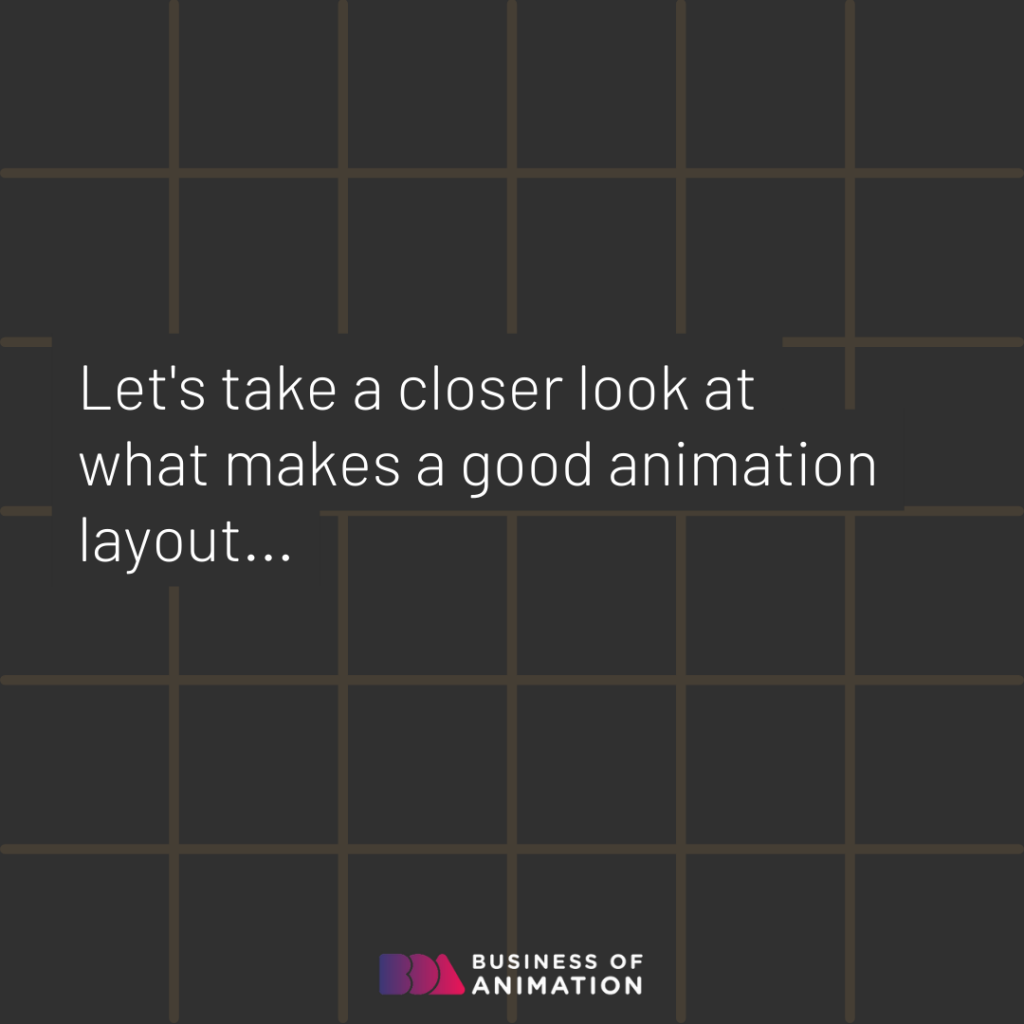
1. Cinematography, Blocking & Staging
Regardless of whether the film is 2D or 3D, layout artists implement blocking and staging principles, as well as photography and cinematography techniques that include framing, composition, camera motions and angles, focus, lighting, scale, proportion, perspective, and depth of field.
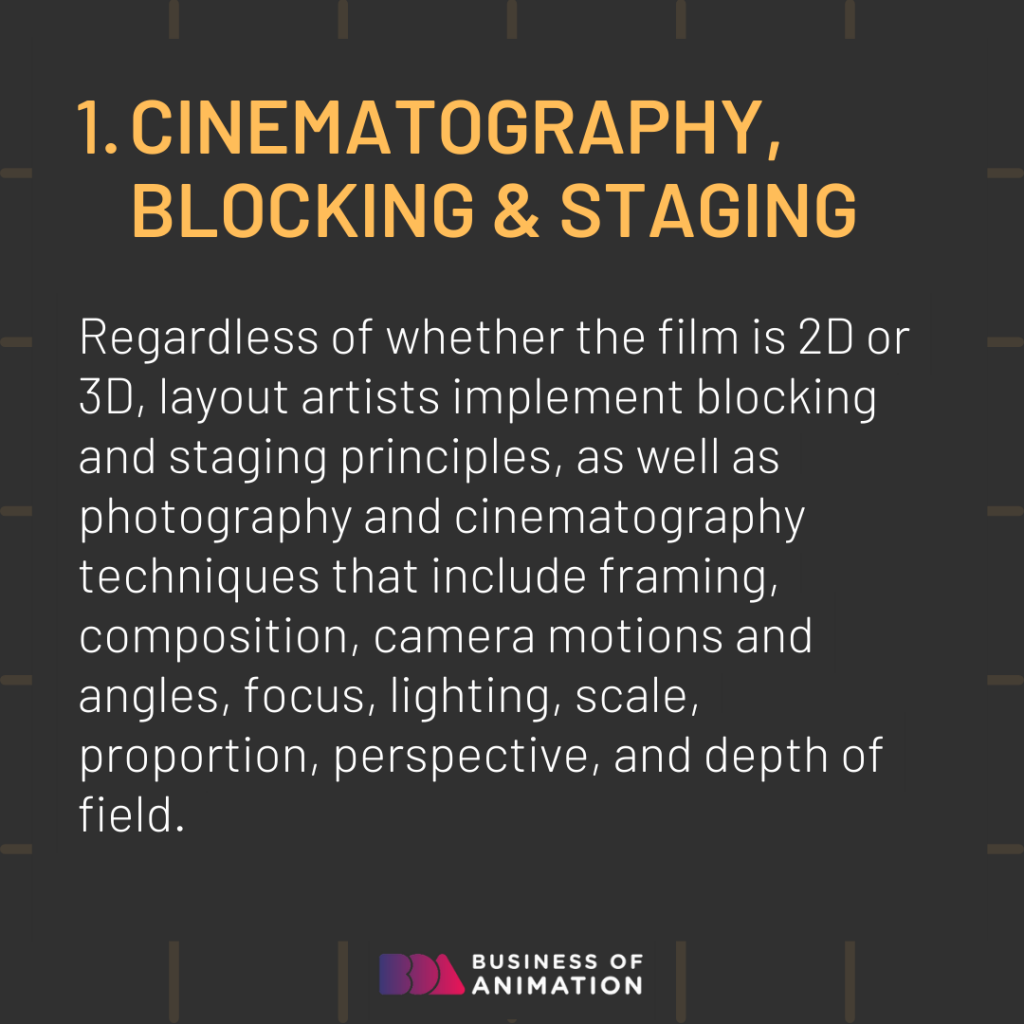
2. Animation & Video Editing
Although layout is part of the pre-production stage, layout artists use basic animation and video editing skills to roughly animate shots and get a good preview of the entire look and quality of the video or film.
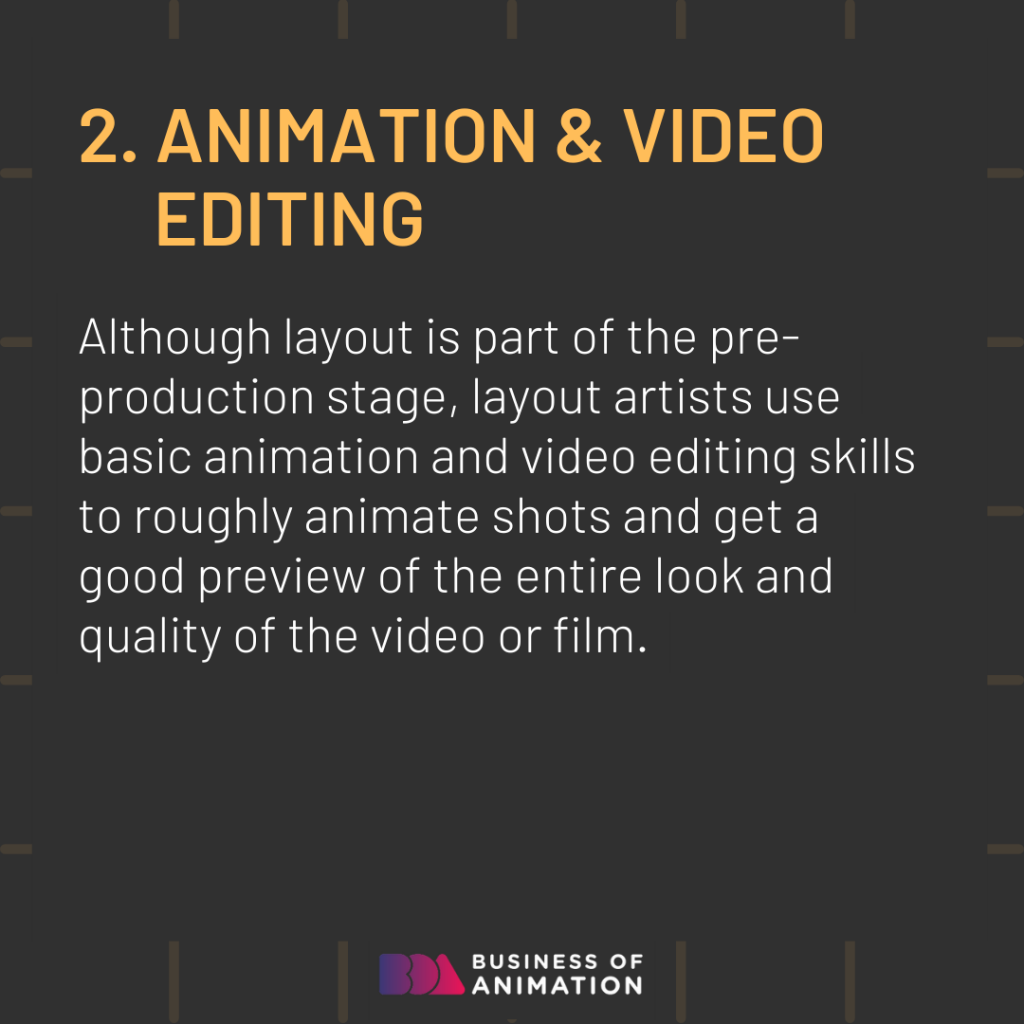
3. Modeling & Background/Asset Design
Layout artists usually receive storyboards and design assets and then work from there. However, sometimes, they also design backgrounds and props when not available to help facilitate decisions in camera focus and scene composition.
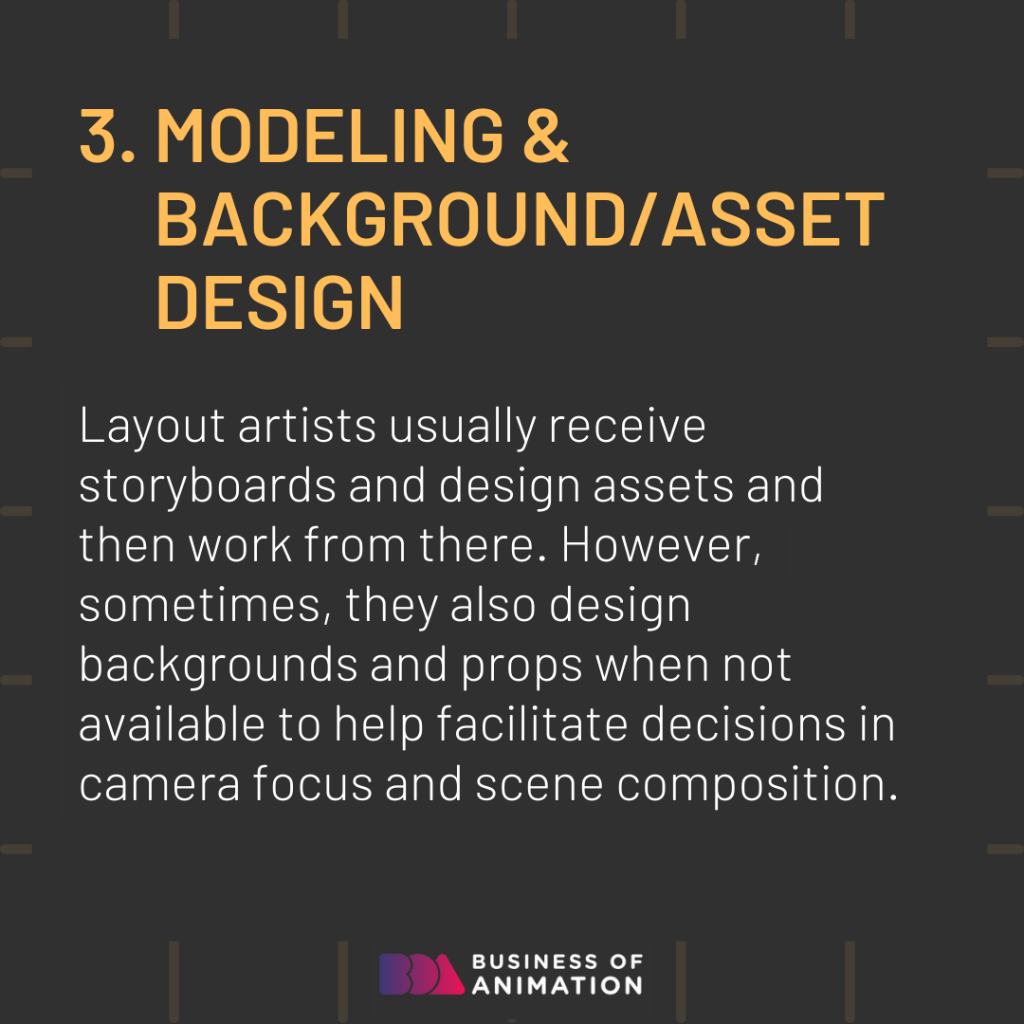
4. Acting, Movement & Choreography
A good acting background helps animators and layout artists translate personality and character traits to an inanimate object or character model. Meanwhile, choreography makes the layout more compelling and is necessary when designing motion sequences or physical body forms.
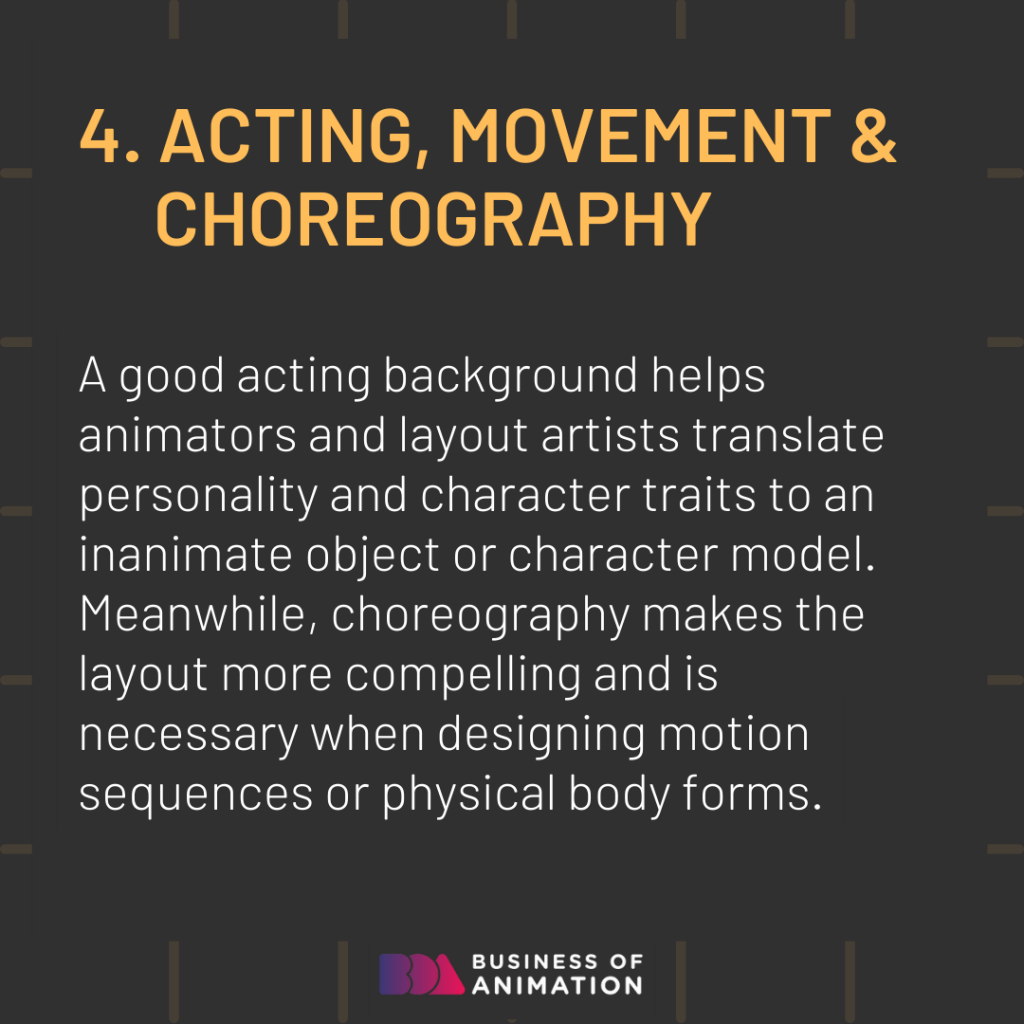
5. Storytelling & Communication
Understanding the story and how to effectively portray each sequence with the proper focus and camera placements is crucial for creating an immersive experience and eliciting the appropriate emotions from the audience.
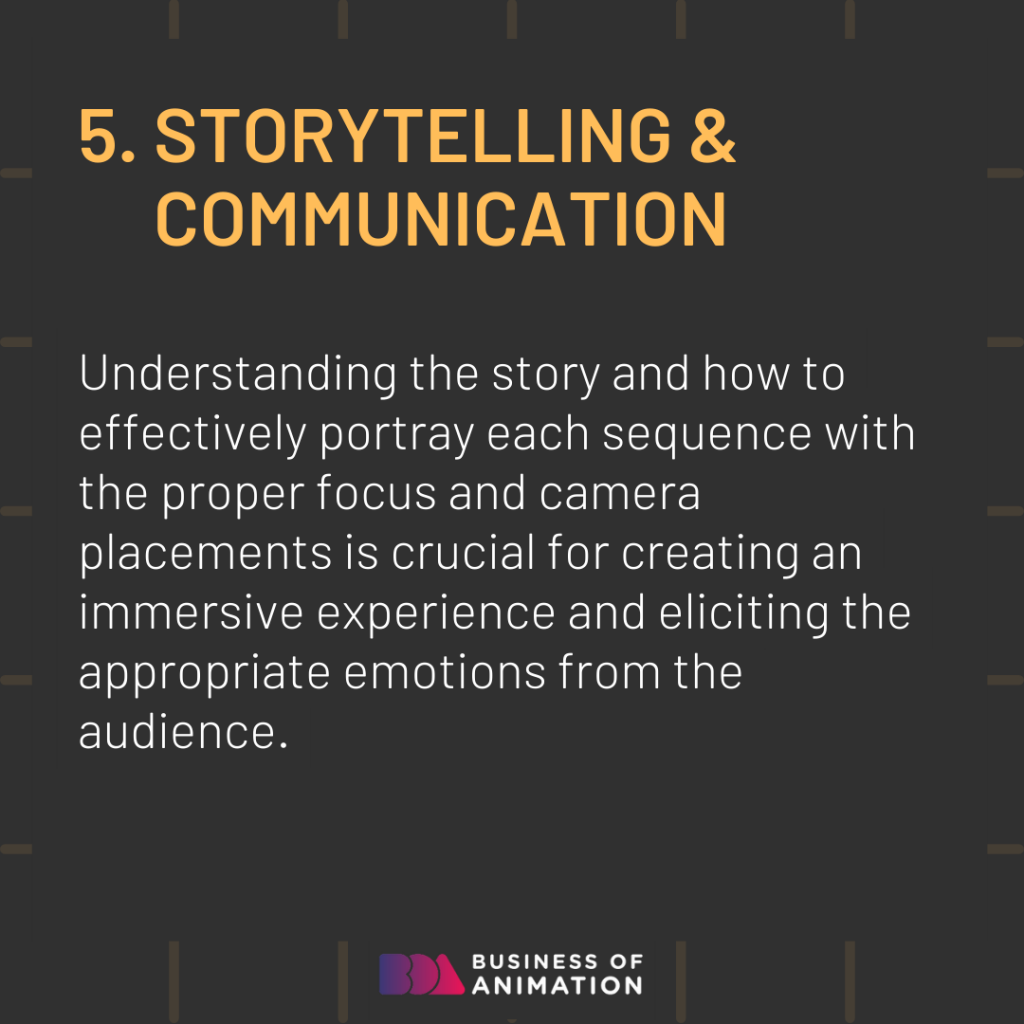
6. Problem-solving
When creating quality and systematic animation layouts, you have to figure out things like how to compose shots based on the desired perspective and how to use methods such as trenching to balance the level of tall and short characters in a frame.
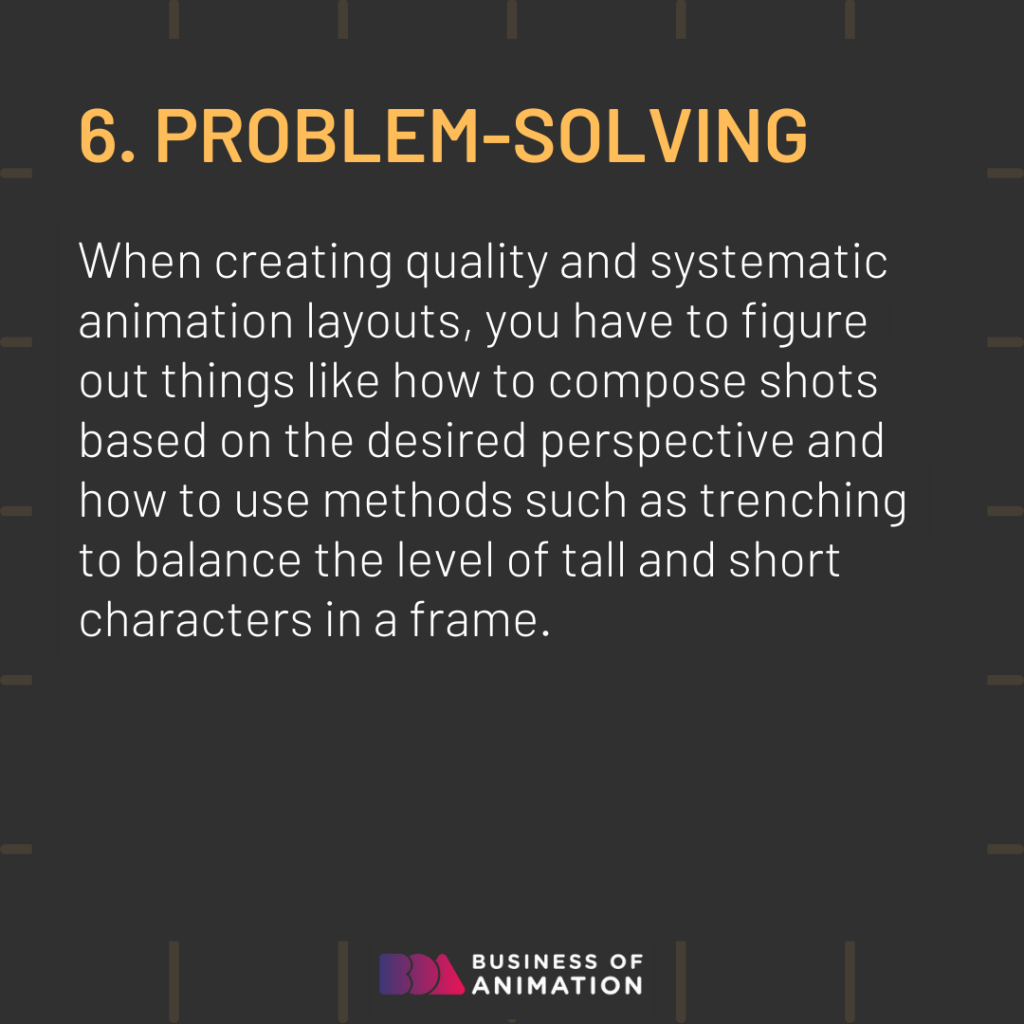
Tired of Not Knowing How to Get New Animation Clients? Sign up for our FREE Masterclass!




